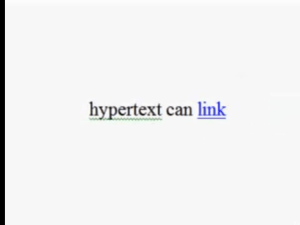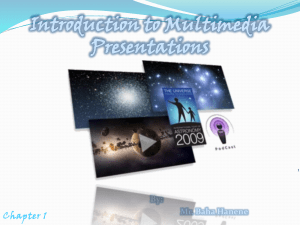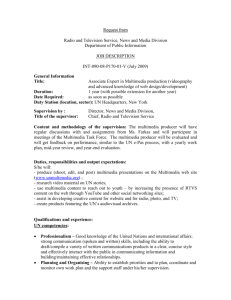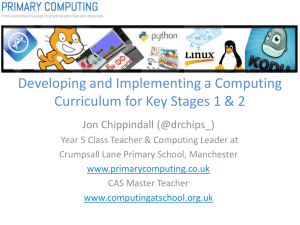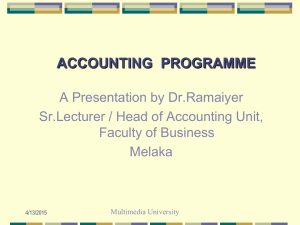Introduction to Multimedia project Management
advertisement
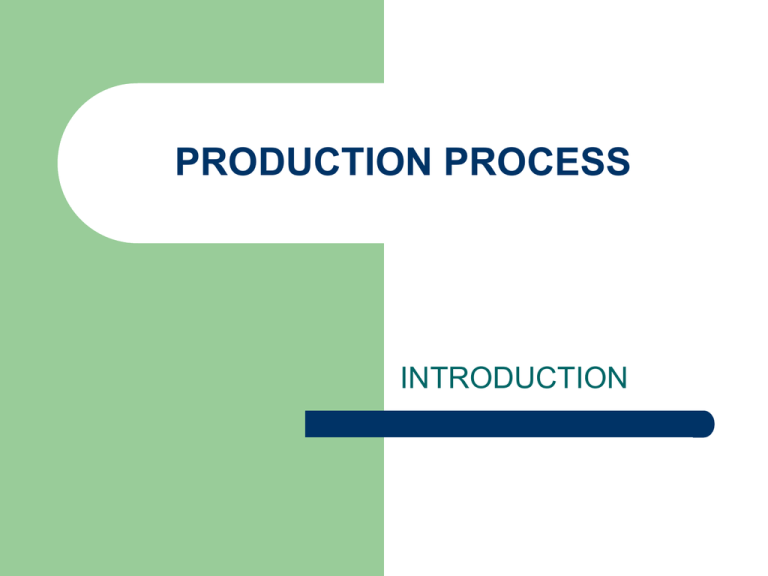
PRODUCTION PROCESS INTRODUCTION The Context of Multimedia An increase in the number of people working within the Multimedia field over the past 5 years. Online Projects (interacting with other systems) such as those for the World Wide Web or Interactive Television (iTV). Offline projects (self contained system - not interacting with anything outside its immediate environment) such as CD ROMs, Interactive Systems, Multimedia Kiosks.. Multimedia has been integrated into main stream business practice. e-Learning & e-Commerce & Interactive Services Multimedia – A Definition “Multimedia is the Seamless integration of text, sound, images of all kinds and control software within a single digital information environment.” Tony Feldman, Multimedia Consultant Multimedia project – A Definition “A multimedia project comprises of a series of tasks that deliver a combination of media and have a computer component to integrate them.” Elaine England, Managing Multimedia Development of a Multimedia Project The skills needed to produce multimedia are diverse. Working practices are still emerging and at present are often linked to traditional practices with limited success. A company’s culture can influence the way in which they approach a project. Emerging Development Models As Multimedia is in its infancy development models are somewhat embryonic in their lifecycle. They draw heavily on a range of other established project models from other disciplines. New media companies tend to have their roots established in one of the following disciplines. Functional Creative Software House Advertising Television Production Marketing Creative Working Practises This approach encourages constant change Clients expectations of change are raised Reworking takes place throughout the development process Applications may look good but function less well Functional Working Practices This approach encourages a detailed definition stage before project is undertaken They are strongly documented Changes are discouraged or controlled Tend to focus on functionality and less on visual aesthetics Have a high admin cost Client Cantered Project Lifecycle Gain an understanding of clients wants More experienced companies will make assumptions drawn on experience for small projects Larger projects require involvement of managers, staff, developers, etc Process known as “scoping the project” Determine timescales and budget Produce “requirements agreement” Client Centred Project Cycle Points to remember The person responsible for winning the project needs to be guided strongly by company polices in what agreements to reach to avoid problems later for the rest of the team and company. Apart from competence in software and media design and production, cost control and staff management skills are needed. A client is anyone that has the authority to control the time and budget, or to sanction the design. A client centered project follows stages of initiation, scoping and proposal definition, followed by production. The production phase has several levels, which are interrelated. It is not a linear process.




